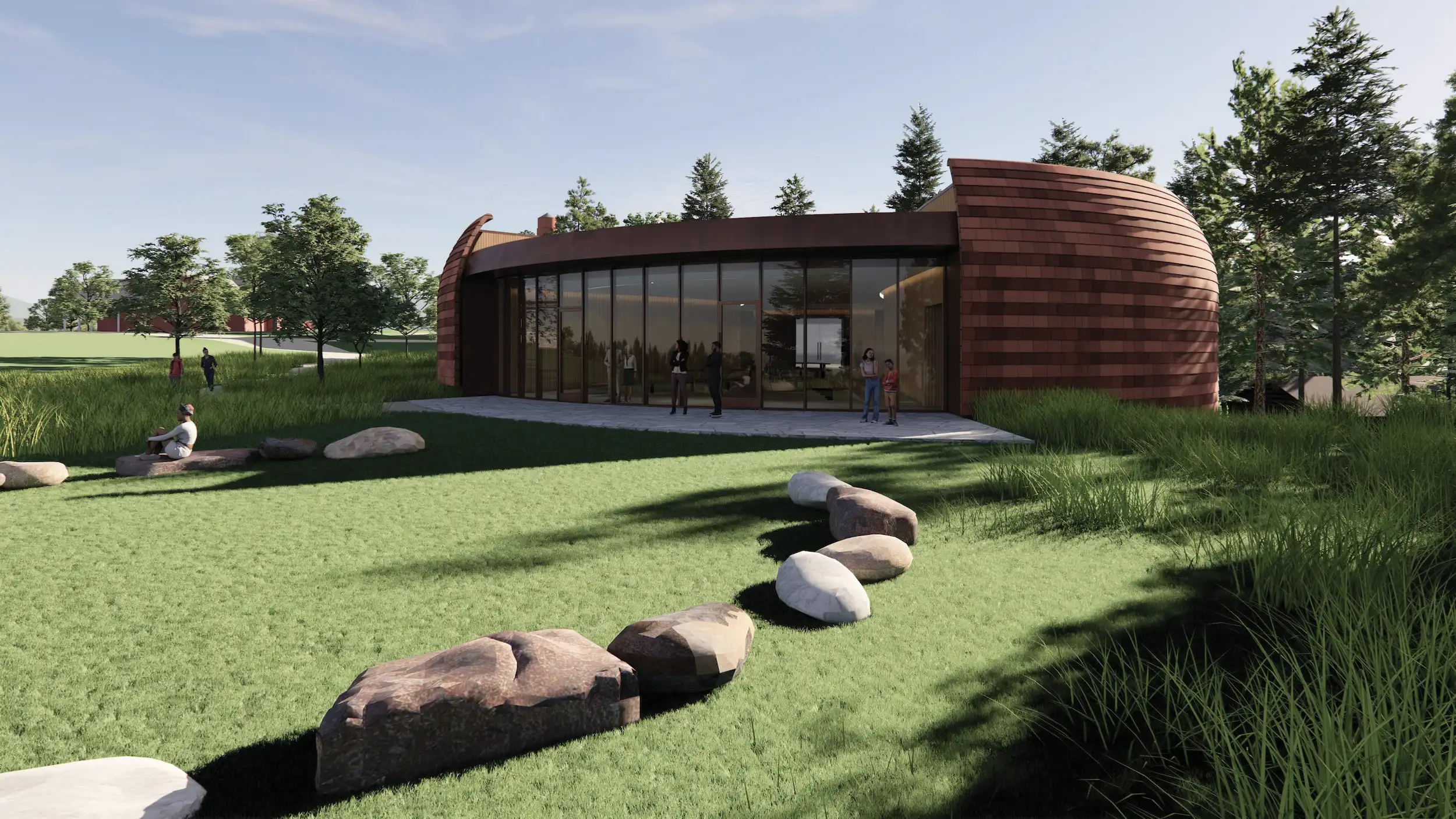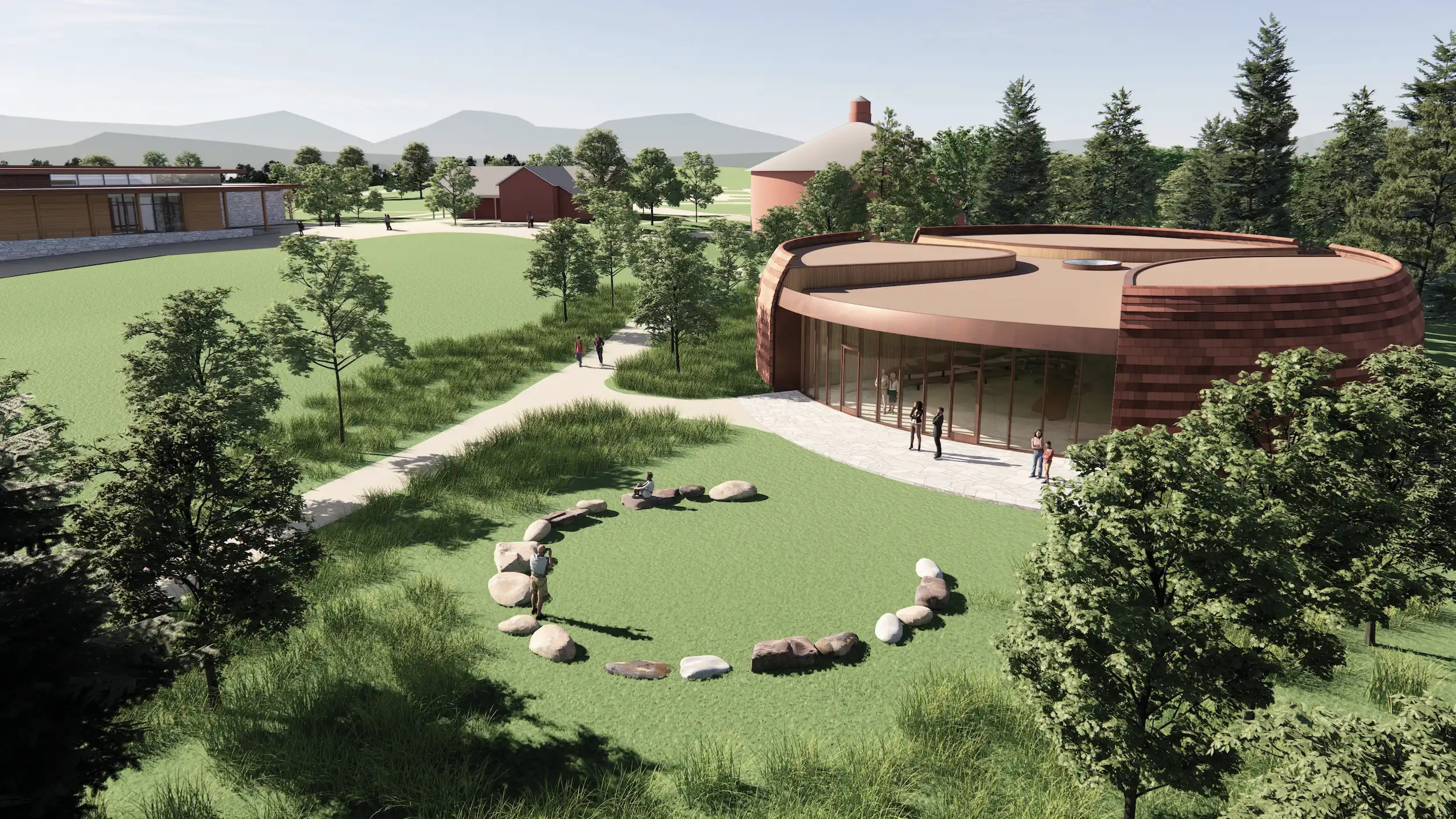Last summer, just weeks after the Shelburne Museum in Shelburne, Vermont, revealed that Adjaye Associates had been tapped to design its new Perry Center for Native American Art, the museum swiftly severed ties with the firm following the release of a July 4, 2023, report published by the Financial Times detailing serious allegations of sexual misconduct against its founder, Ghanaian-British architect David Adjaye. At the time, the museum’s director and CEO Thomas Denenberg made clear that despite the Adjaye disengagement, the institution remained “committed to moving forward with the project and the many other partners and collaborators who have been involved since its conceptualization.”
.webp)
East entry view of Perry Center for Native American Art at Shelburne Museum. Image by Annum Architects
Now, more than a year later, Shelburne Museum has announced a new design team that will oversee the $12.5 million project—the first new building to be completed on the museum’s sprawling 45-acre campus along the shores of Lake Champlain since the completion of the Pizzagalli Center for Art and Education, which debuted in 2013. Boston-based Annum Architects, formerly Ann Beha Architects, designed that building.
Annum Architects will return to Shelburne Museum to design the Perry Center, joined by Two Row Architect of the Six Nations of the Grand River First Nation in southern Ontario as co-architect. Two Row was previously credited as Indigenous consultant when the project was helmed by Adjaye. As noted by the museum in its announcement, the two firms represent a 100 percent minority- and Native-owned design team. Cambridge, Massachusetts–based landscape architecture studio Reed Hilderbrand was part of the Adjaye-led team and has been retained in this new iteration.

View of north facade and gathering circle looking southeast. Image by Annum Architects
Planned to be a “highly sustainable” 11,200-square-foot (larger than the previously announced 9,750-square-foot) building, the design of the Perry Center is the “result of a collaborative approach focused on communication and relationship building with Tribal Nations to create a national resource for the study and care of Indigenous art,” said Denenberg in statement. As detailed by the museum, the design was shaped through close collaboration with over 50 Indigenous partners, who “advised on cultural protocols and design considerations and care and conservation of the collection.” Further insight was gleaned from a series of listening sessions—or “talking circles”—led by Two Row and involving leadership of the local Abenaki, traditional stewards of the site, and the various Tribal Nations represented in the museum’s collection.
“The internal space, where the items from many Tribal Nations will be housed, will need to accommodate unique moments with items in the collection and allow for those items to be looked at and taken care of in unique ways,” explained Two Row partner Matthew Hickey from the Mohawk Nation.

1

2
View of orientation space looking north (1) and orientation space from entrance (2). Image by Annum Architects
In total, the collection represents 500 items from 389 Tribal Nations. The museum’s existing (and rarely displayed) collection of Native art grew considerably following a recent gift of more than 200 items from the late local restaurateur Anthony Perry and his wife, Teresa, which prompted the museum to construct a new center to house the expanded trove.
“Searching for the appropriate design response for the building and landscape has been a deliberate and deeply collaborative exploration between Shelburne Museum, Two Row, Reed Hilderbrand, and Annum,” said Annum principal Steven Gerrard. “Embedded in the design are careful listening, research, and creative iteration of ideas, all reflective of how the museum has operated since its founding.”

View of gathering circle and north facade. Image by Annum Architects
Established in 1947 by folk art collector Electra Havermeyer Webb, Shelburne Museum’s dizzying, Americana-heavy collection consists of more than 100,000 objects—Impressionist paintings, quilts and domestic textiles, horse-drawn vehicles, wildfowl decoys, a sizable trove of circus artifacts, and more—housed within a total of 39 exhibition buildings, most of them historic. The Perry Center, which is anticipated to begin construction in spring 2025, will be the museum’s 40th building. The Adjaye design was set to break ground this fall.




.jpg?height=200&t=1710272101&width=200)
